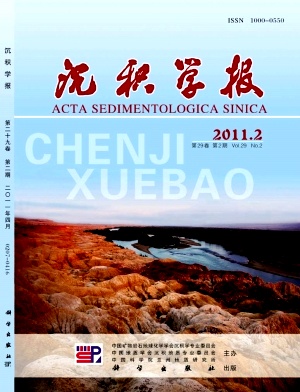Application of Carbon and Oxygen Isotope to Carbonate Reservoirs in Northeast Sichuan Basin
- Received Date: 1900-01-01
- Rev Recd Date: 1900-01-01
- Publish Date: 2011-04-10
-
Key words:
- Northeast Sichuan Basin /
- carbonate rocks /
- carbon and oxygen isotope /
- sealevel changes /
- burial dolomitization /
Abstract: The trend of thirdorder sealevel changes and mechanism of dolomitization are studied, based on C, O isotope analysis of carbonate rocks, as well as microscopic research, CL analysis, and previous studies of Feixianguan Formation in Jichang of northeast Sichuan Basin. In convenience to analysis, the samples were grouped into two sets of micrite limestone and dolomite. The C, O isotope analysis of micrite limestone shows that the value of δ13C are all positive, and two stages are clear, that is, the first stage is a fast rising stage and followed a fallingstage with a wave shape. The result suggests that the sea level increases quickly in the early First Section of Feixianguan Formation, then, shows a slowly falling trend with sublevel fluctuation after maximum flooding surface. The δ13C evolution curve is rising totally, which is in accord with the rising trend of the Triassic global sea level. The implications of δ18O on the sealevel changes is obscure, due to the processes of late diagenesis. The C, O isotope analysis of dolomite shows that the orthogonal points of δ13C (0.91‰~2.09‰) and δ18O (3.45‰~9.29‰) fall in the second quadrant. The result, combining with microscope studies and cathodeluminescent analysis, suggests that dolomitization was formed in the buried condition.
| Citation: | CHEN Mei. Application of Carbon and Oxygen Isotope to Carbonate Reservoirs in Northeast Sichuan Basin[J]. Acta Sedimentologica Sinica, 2011, 29(2): 217-225. |






 DownLoad:
DownLoad: